Trees can be planted at any time of the year (except when the ground is frozen), but fall is the best time to plant trees – hands down.
Why fall?
First, you can take advantage of the root growth during the dormant season. Even though the rest of the tree is dormant, the roots underground are still growing. The tree directs its stored energy entirely toward root growth since there’s no leaf production or flowering going on.
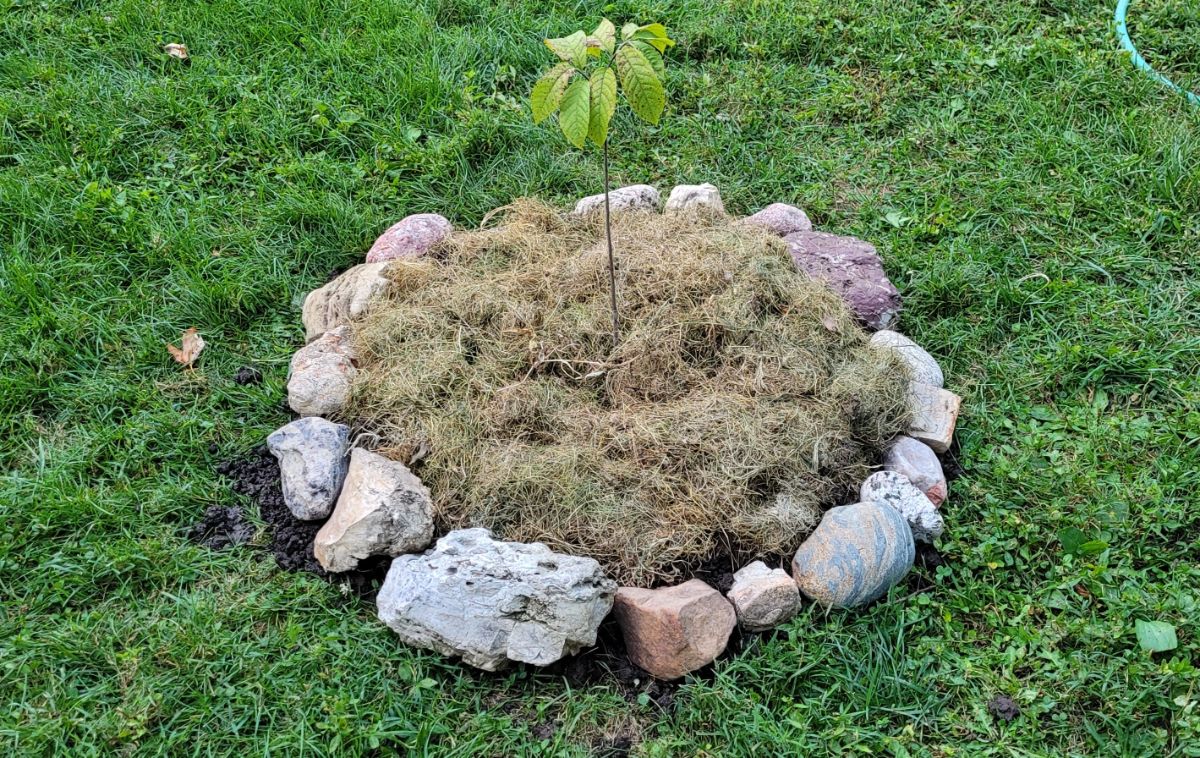
By getting this root growth done early, the tree gets established sooner and won't need as much irrigation the following summer.
Second, you can get trees on sale in the fall. As far as I’m concerned, that’s worth the price of admission.
Jump to:
- What Do You Need to Plant a Tree?
- First, Start with the Soil
- Choose A Place with Good Drainage
- Avoid Subdivision Soil
- Next, Amend the Soil with Good Organic Material
- What Kind of Organic Material Should You Add to the Soil?
- A Tarp is a Helpful Tool
- How Deep Should You Plant Your Tree?
- Preparing the Rootball
- Check the Planting Depth
- Finish Backfilling the Hole
- Add a Saucer to Hold in Water
- Give the Tree a Good, Long Drink
- Add a Thick Layer of Mulch!!
What Do You Need to Plant a Tree?
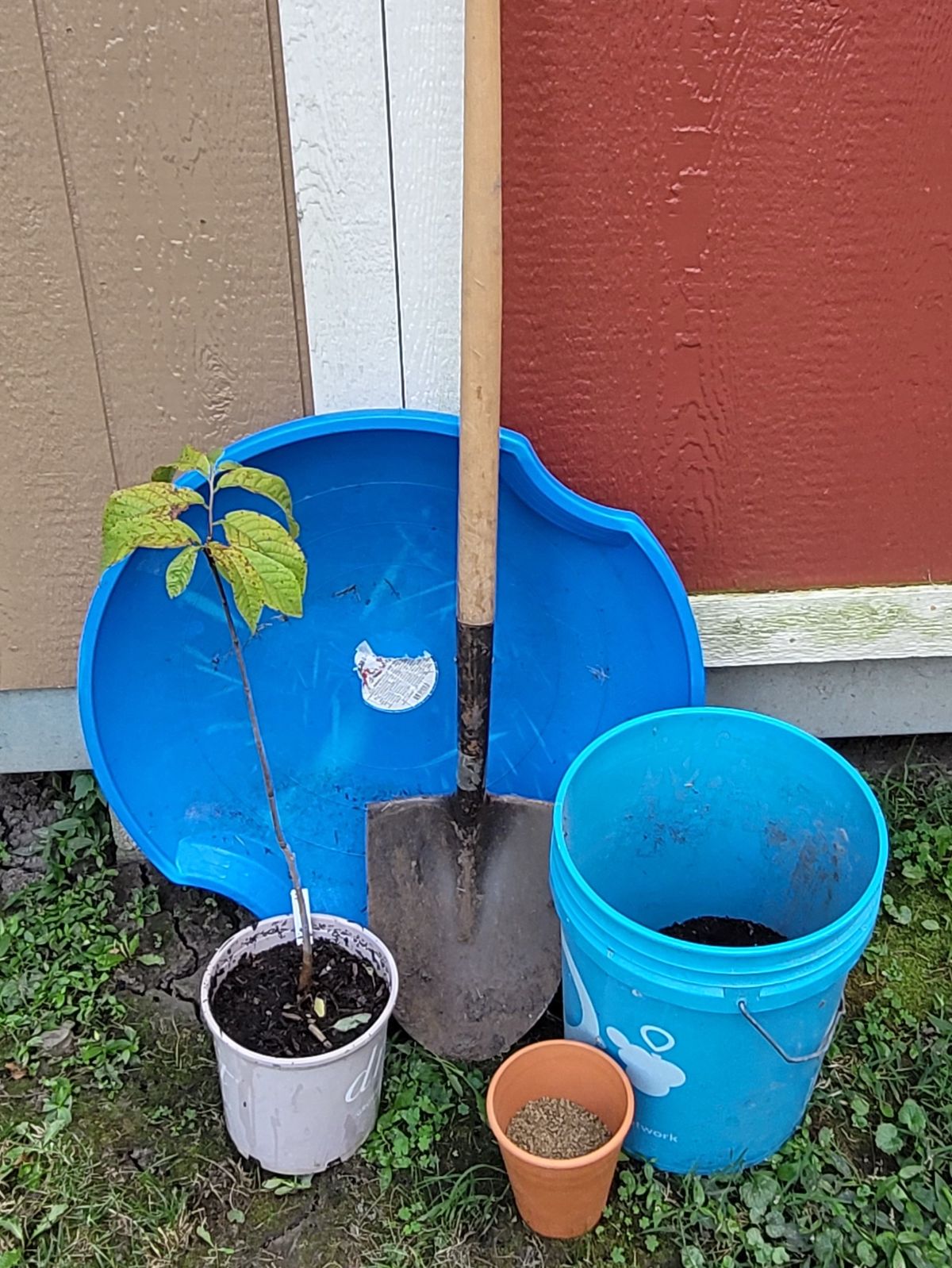
Start by assembling your materials beforehand.
- A tree (naturally)
- A nice, sharp shovel
- A bucket of compost
- Any other soil amendments you want to add (kelp meal, coconut coir, etc.)
- A tarp (or something that works as a tarp)
- Pruners
- Water hose
First, Start with the Soil
A healthy soil creates healthy plants. I cannot stress this enough.
If trees are planted in poor soil, the trees cannot simply unroot themselves and walk to a better location like the Ents in The Lord of the Rings. They are stuck there. So it's up to you to make the soil as good a place as it can be.
A soil that's busy with all kinds of life, with an underground biome, is going to grow healthy plants. There are all these processes going on in the soil that we still haven’t figured out, but they create healthy plants.
So give a tree good soil to start with, then keep adding mulch and compost to the soil as the old mulch and compost breaks down.
Choose A Place with Good Drainage
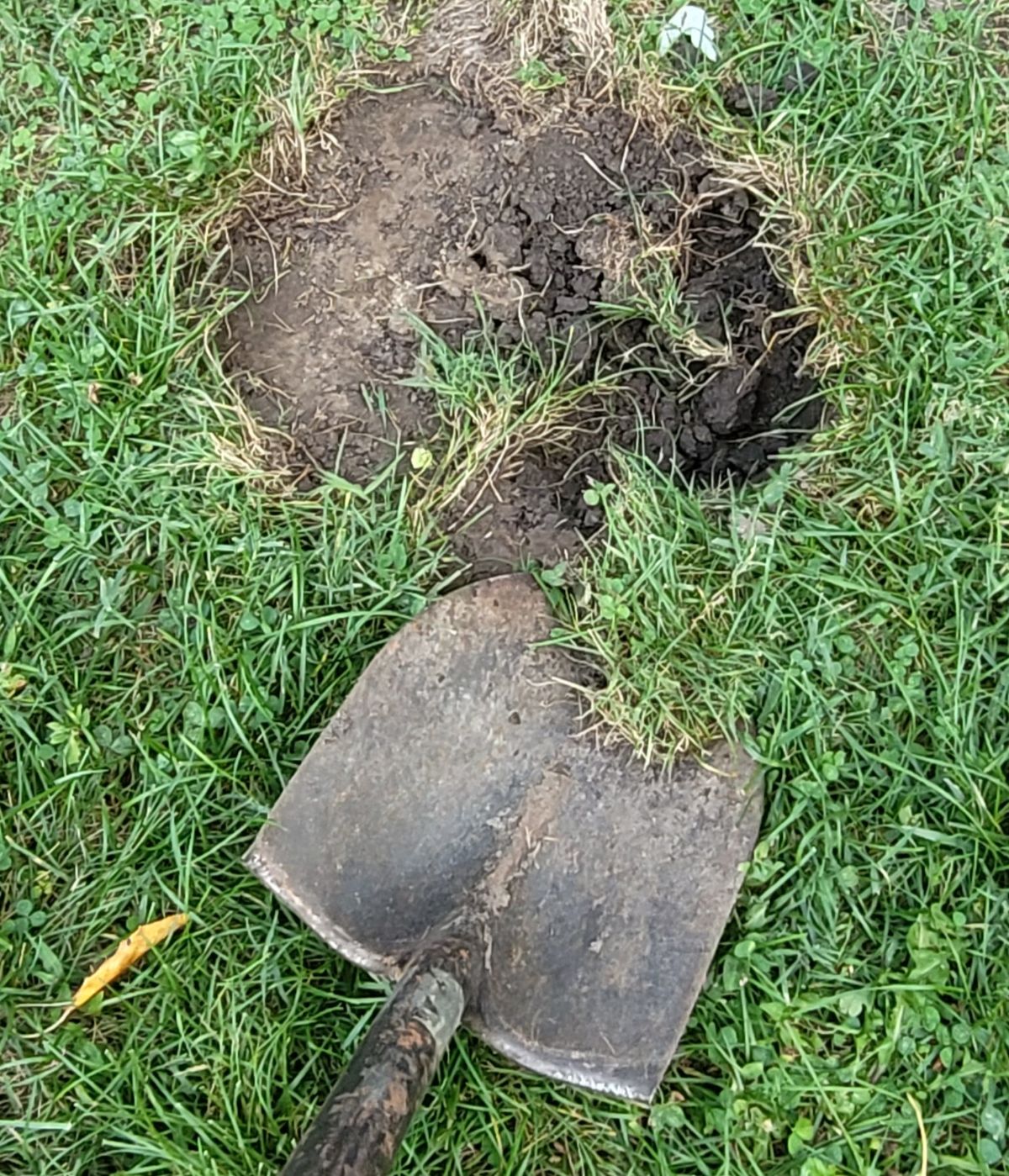
To check the drainage, to dig a hole about a foot deep and 4 to 12 inches wide. Fill it with water and leave it to drain until the water is gone. This saturates the ground.
As soon as the water is gone, refill the hole. Stick a ruler in the hole to measure the water depth. Then 15 minutes later, measure how many inches the water dropped. Multiply this number by 4 – this gives you how much water drains in an hour.
Optimally, you want soil that drains between 1 to 3 inches an hour. Anything less than that means you have poor drainage. Water that drains more than 4 inches per hour is very well-drained.
Compost will help improve both types of soil. In poor-draining soils, compost (with the help of the soil ecosystem) will help give the soil pore space to hold air and water. In fast-draining soil, compost will help catch the water so it doesn’t drain so quickly and hold nutrients so the draining water doesn’t carry them all away.
Avoid Subdivision Soil
If you're planting a tree in new construction, this is of additional importance because subdivision soil (which is what I call it) is a real issue.
In the part of the United States where I live, our subsoil is made up of this very dense clay. The yards of newly-constructed houses is often composed of this subsoil that was thrown up during the construction process and made into a yard.
That’s subdivision soil. It’s a nightmare to dig in, and it’s very difficult to plant in. It’s almost pure slippery clay. Sometimes debris from construction will show up in the soil – concrete chunks, sheetrock, roofing shingles, and so forth.
Trees and plants that are crammed into this soil look wretched and miserable. But you can’t really blame them for that.
So if you're getting ready to plant a tree in that, you'll have to dig deeper and remove soil around it so the tree can at least get a good start.
Next, Amend the Soil with Good Organic Material
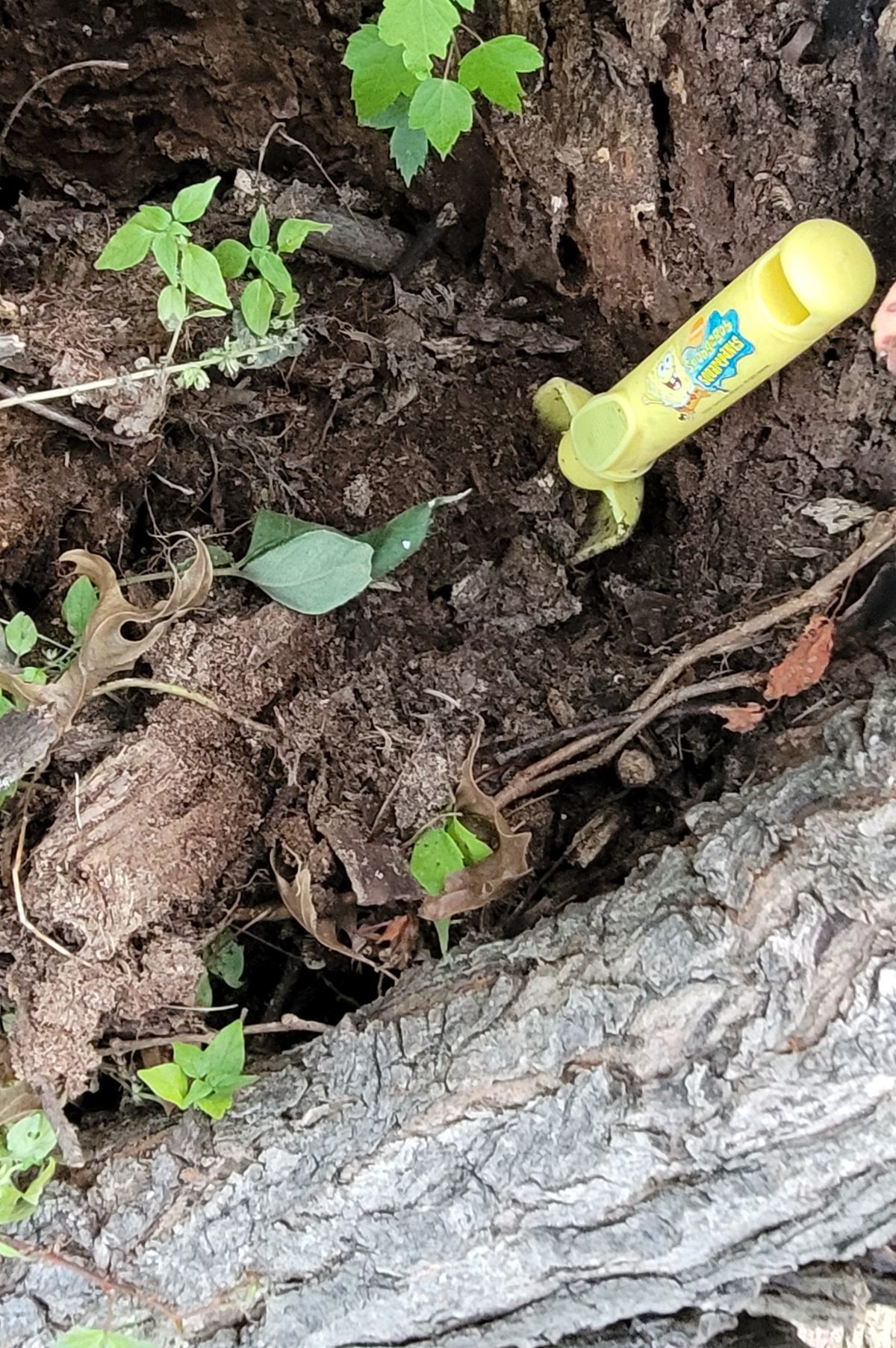
Organic soil amendments are added to the tree planting site in order to improve the nutrients and the water-holding capacity of the soil.
When you're adding organic matter, it's a good idea to incorporate it, not just in the planting hole but around the planting site as well.
Oftentimes, people will dig a hole, add organic matter, and drop in the tree. One problem: There’s a lot of good soil in that little cup around the tree, but the rest of the soil is nowhere near as good. The roots are going to want to stay inside that little cup and not venture out, which will lead to trouble down the road.
So when you dig the hole, add some organic material, then use the shovel around the edges of the hole to blend the organic material into the soil around the edges. This will encourage the tree to send its roots out into the soil around it.
What Kind of Organic Material Should You Add to the Soil?
Organic matter should make up about 10 to 20% of the soil volume around the tree (though I’m fine with adding 30%).
Compost is a good soil additive, along with coconut coir and leaf mold. Any good organic matter is rich and earthy. It should be crumbly and well broken down.
Adding uncomposted material to the soil, like fresh manure, is a no-no. The microbes that are breaking down the uncomposted material will burn the tree’s roots in the process. Always compost your organic materials first.
A Tarp is a Helpful Tool
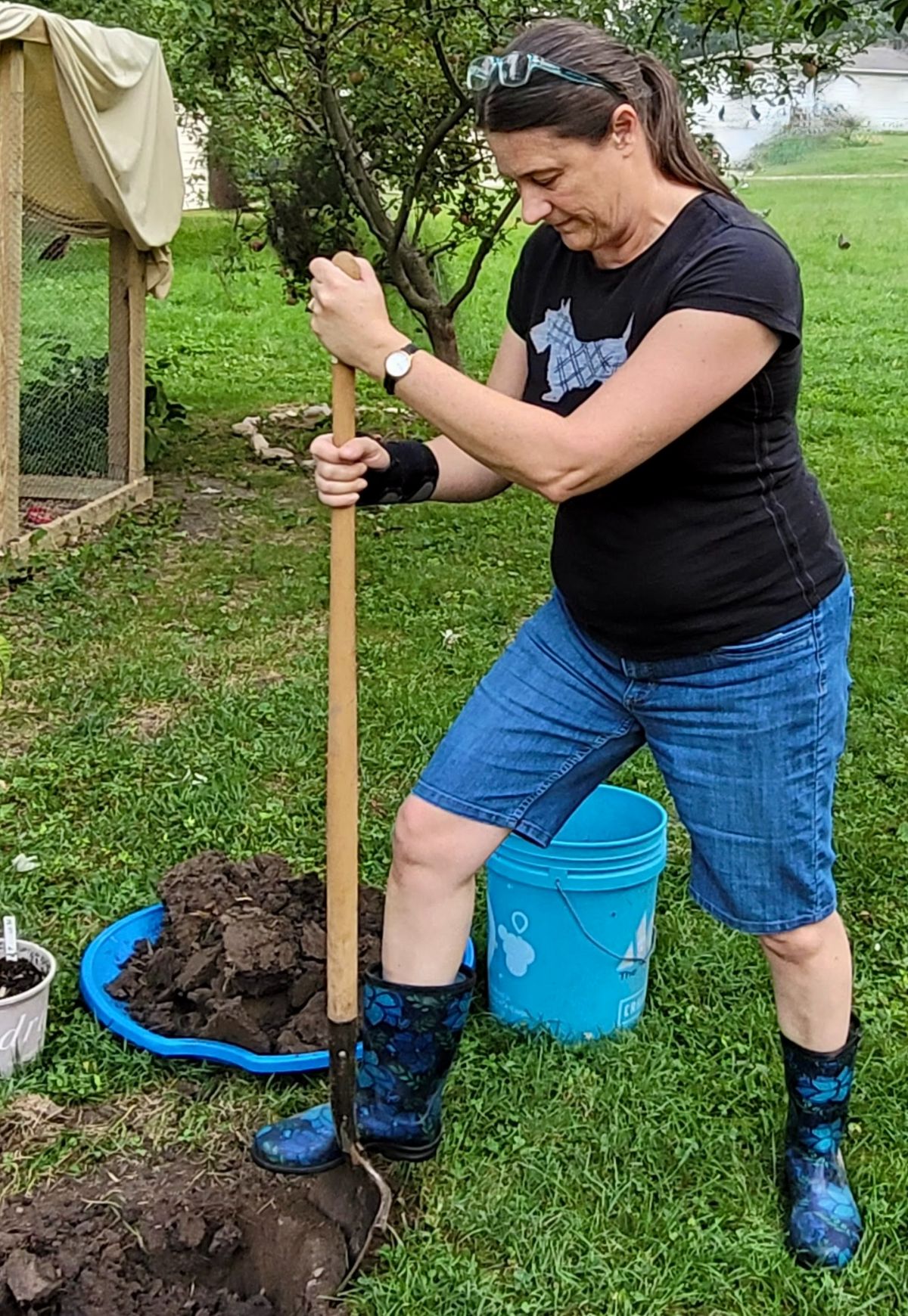
Here’s a little trick that some landscapers use.
Before digging the hole, get a tarp or a large piece of burlap and lay it next to where you're going to be digging.
As you dig, place the soil on top of this tarp. Put the topsoil in one pile – that is, the good black soil from the top of the ground – and the subsoil in the other pile.
Once you’ve finished your hole, mix your compost in with the good soil on the tarp. Use the shovel to break up dirt clods and to cut clumps of grass out of the soil.
How Deep Should You Plant Your Tree?
In well-drained soil, the planting hole should be no deeper than the height of the root ball.
That means the soil at the bottom of the hole is left alone. You’ll want the topmost layer of roots in the root ball to be just under the soil’s surface.
The bottom of the hole should be undisturbed (mostly) to keep the tree from sinking.
Additionally, the planting hole should be at least twice as wide as the rootball or even wider. The roots from your tree will grow more quickly into good, loosened soil, which allows the tree to get established more quickly.
Now it's time to take the tree out and put it in the hole.
Preparing the Rootball
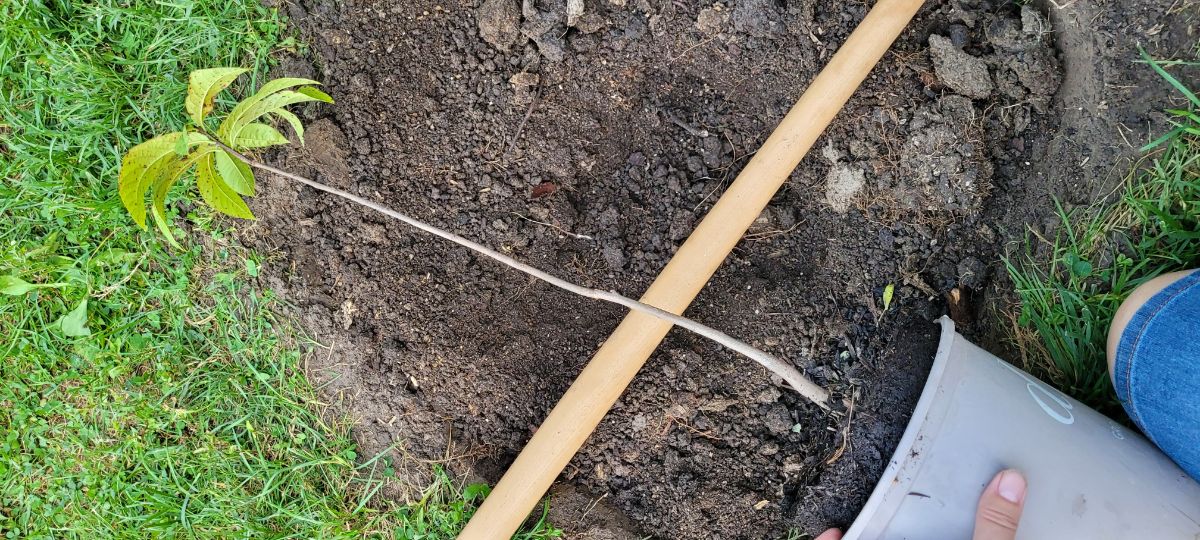
Slide the tree out of the pot and lay the rootball on the ground on its side. Using your knife or pruners, make cuts 1 to 2 inches deep, going from the top of the rootball to the bottom. Make those slices in three to four places around the rootball.
Slicing the roots in this way will cause new roots to grow from where they've been cut, which is healthy for the tree.
Now set the rootball into the hole.
Check the Planting Depth

Make sure the tree is sitting at the right depth by laying your shovel’s handle next to the tree. Use the handle to make sure the top of the rootball is level with the soil. Then you can dig a little more if the rootball is too high or add a little soil if it’s too low.
Finish Backfilling the Hole
So now the tree is in the planting hole, and it's time to fill it up. Put the good soil with the compost and soil amendments mixed in all around the roots.
Then backfill the rest of the soil into the planting hole.
Use your shovel and break up clods of soil on the tarp before you put them back in the soil. Putting large chunks of soil into the planting area will leave air pockets around the root ball, which could dry out sections of the roots and hinder their growth. So break them down.

Put in the first layer of soil around the bottom of the planting hole and gently tamp it in with your foot to get the air pockets out. Or simply water it in.
Add a Saucer to Hold in Water
Finish filling the hole, then use the remaining soil to build a water ring or saucer around the edge to hold water in. Make this about three inches high.
The saucer will hold the water in place around the tree so it doesn't just run off into the neighbor's yard.
If there’s soil left over when you're finished planting, drag it away on the tarp. The tarp keeps everything nice and tidy. You won’t have big piles of soil in your yard that you have to rake away.
Give the Tree a Good, Long Drink
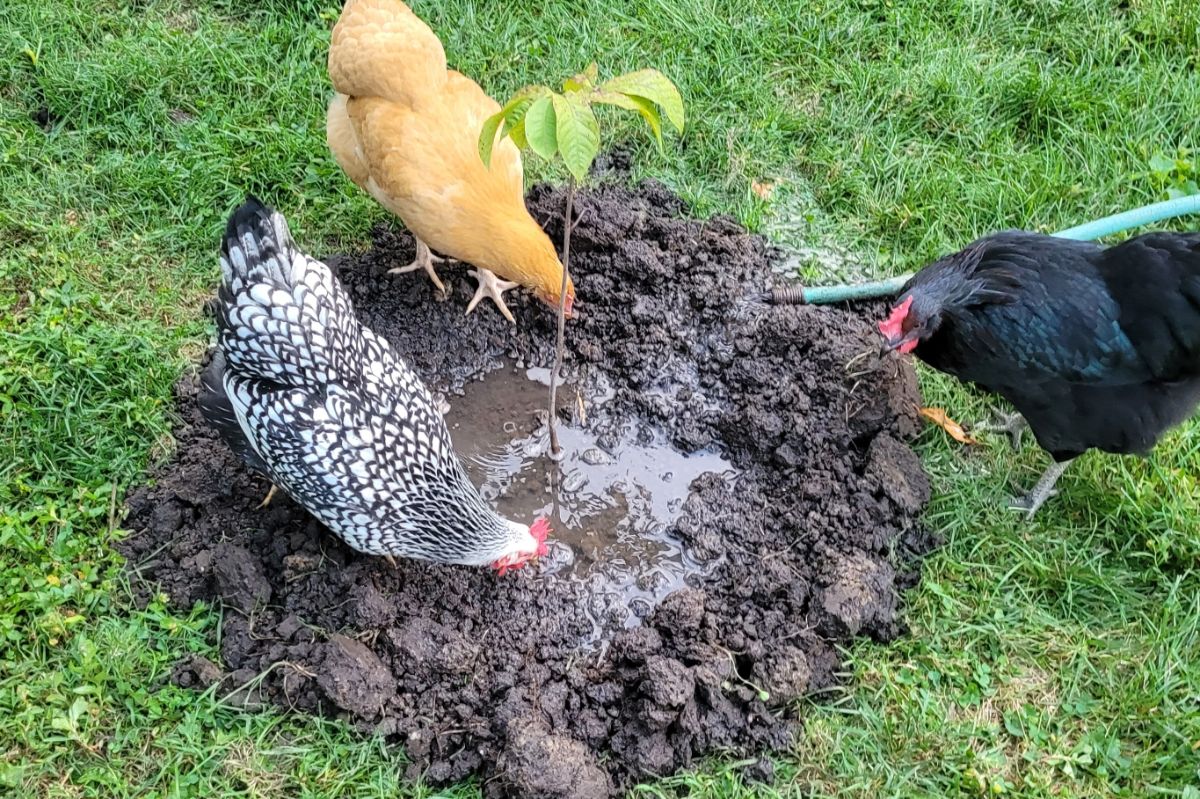
Now that the tree is planted, get the water hose and let it run for a while. Let the water break down the soil and gently mix everything together. You want to water deeply. This will encourage the roots to dig deeply into the soil where they’re protected from summer’s heat and winter’s cold.
Many newly planted trees die after the first couple of months because they do not get enough water.
With good watering practices, your tree will become well-established and prosper in the coming years. Again, the first couple of months are crucial because the tree is trying to get established.
Add a Thick Layer of Mulch!!
Apply two to four inches of organic mulch over the area. Any kind of organic material that breaks down will work fine – pine needles, grass clippings, bark chunks, wood chips.
Keeps the mulch away from the tree’s trunk because mulch pressed against the stem can cause stem rot.
Mulching is a good thing to do for your tree, or indeed, any plant. It keeps the weeds down, holds moisture in the soil, keeps this soil temperature moderate, and protects the roots from the hot sun and the cold winter. Eventually, it breaks down and becomes part of the organic matter in the soil, which is what you want.
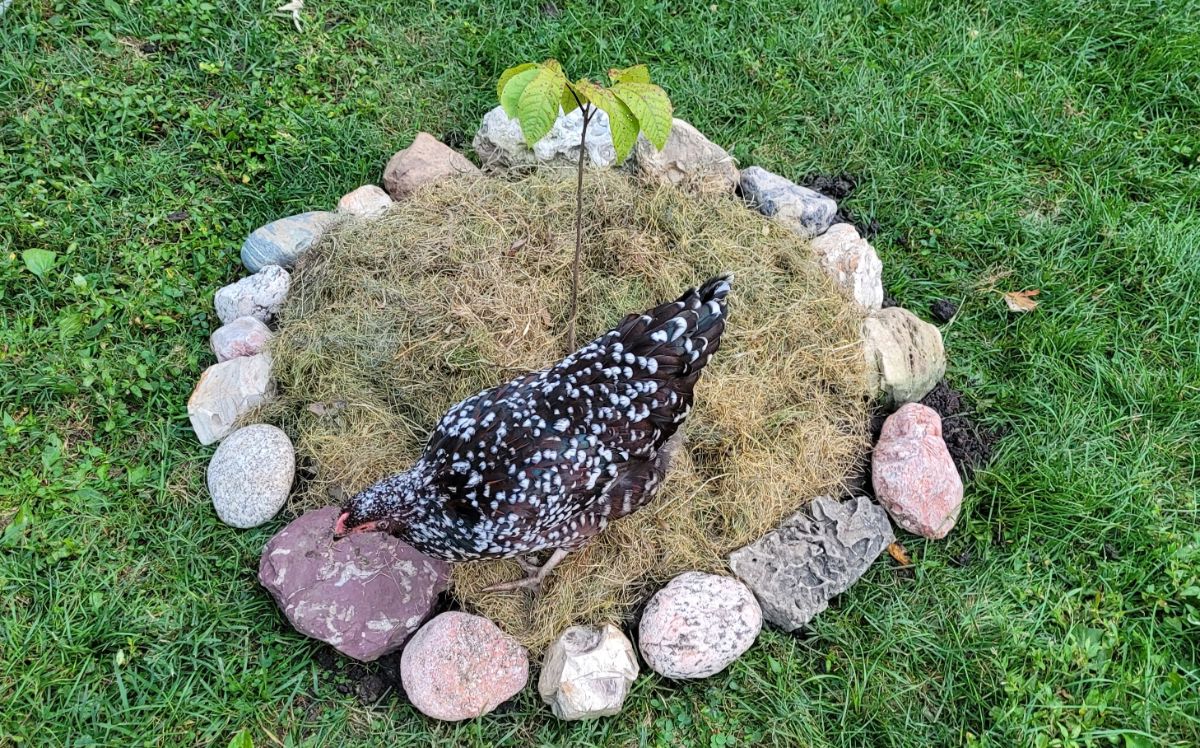
After this, it’s a matter of keeping the tree watered and mulched. As winter comes, add extra mulch. If you’re in a place where you have trouble with hungry rabbits and deer, wrap the tree or put it in a cage of hardware cloth placed far enough away from the trunk so the rabbits can’t press their adorable noses against the wire mesh and chomp on your tree’s bark.
In spring, when the soil thaws out and all the plants green up, give your tree a fresh topping of compost and a balanced fertilizer like kelp meal and water it in well. Water regularly as summer comes.
Congratulations! Give yourself a high five. You have prepared a great home for your new tree.
Keep improving the soil around it, keep it mulched, keep watering it, and you will give this brand-new tree the beginning of a great life.

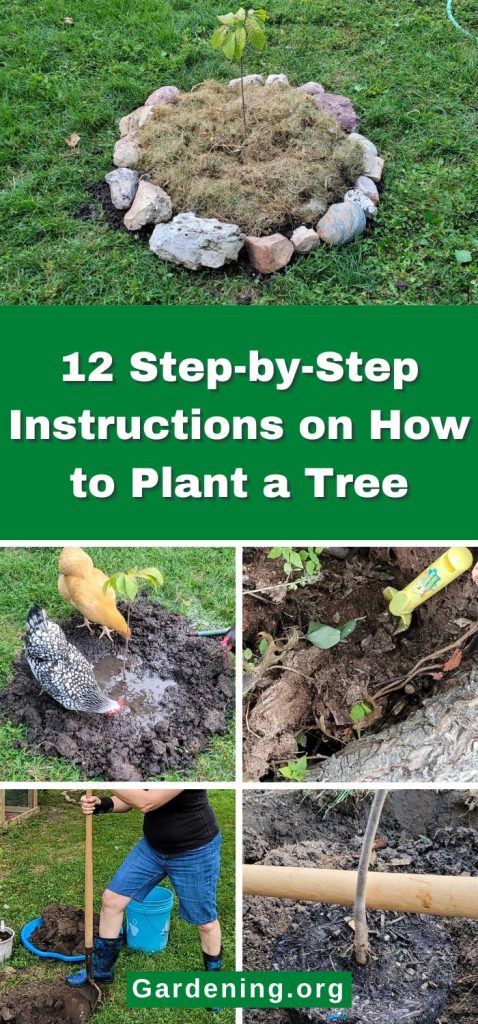
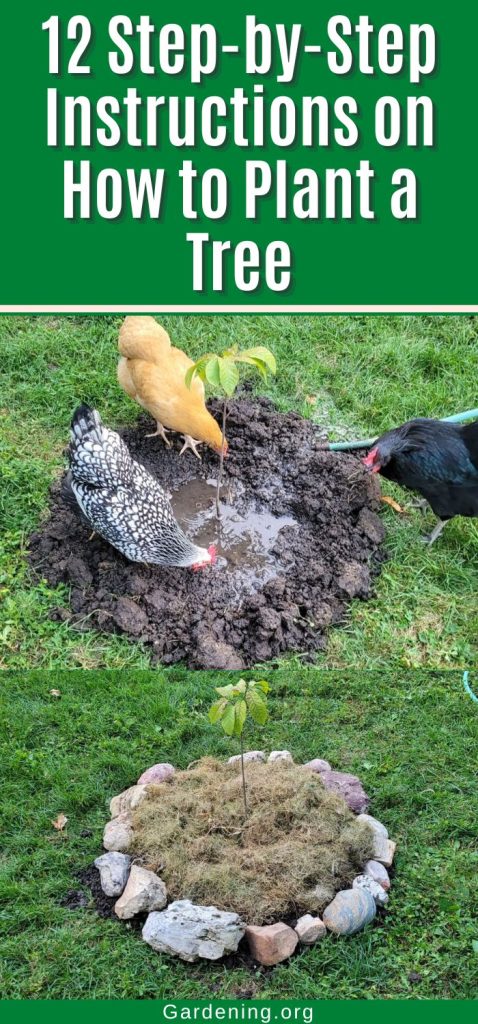
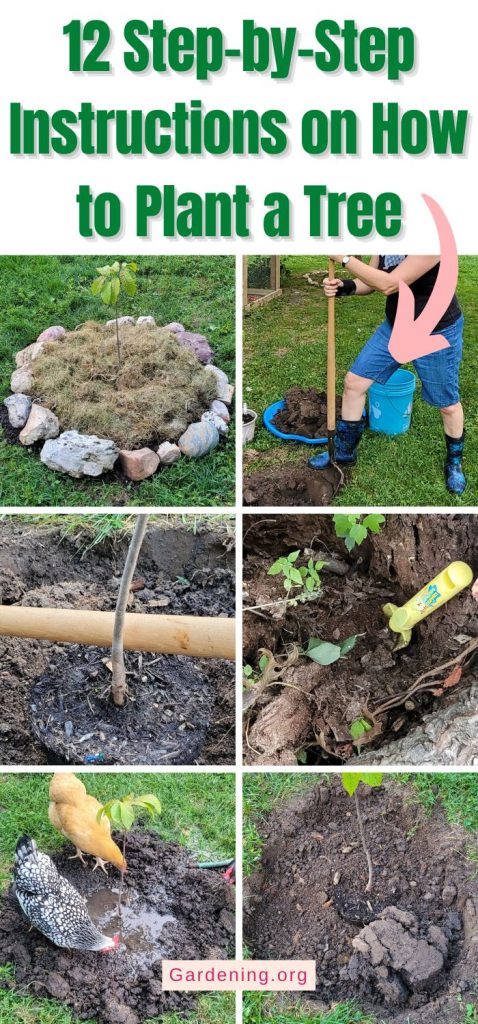
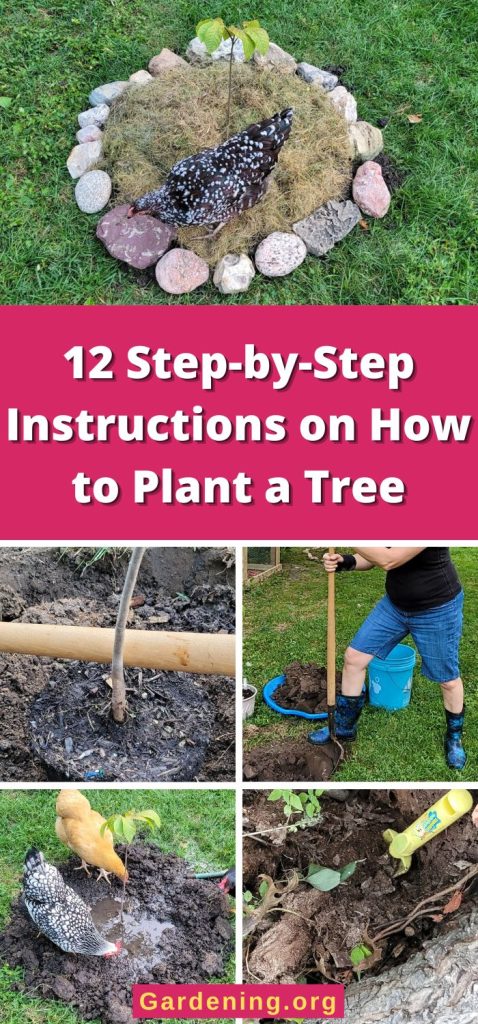




Leave a Reply